written by Sonam Vashi
written by Sonam Vashi
IT’S FALL IN NEW YORK CITY’S HARLEM, AND GHOLNECSAR “GHOLDY” MUHAMMAD IS STANDING IN FRONT OF A CLASS OF THURGOOD MARSHALL ACADEMY FOURTH-GRADERS, ALL IN RED AND WHITE SWEATERS AND TIES.
“Today, we are going to learn about the history of books and libraries!” she says enthusiastically.
The students’ faces, understandably, are a little blank.
Then Muhammad veers in an unexpected direction, discussing ancient libraries in Timbuktu, Mali and Alia Muhammad Baker, the librarian of Basra who saved an estimated 30,000 books during the 2003 invasion of the Iraqi city. She introduces a story about Richard Wright, a prominent black writer who, because of Jim Crow laws, couldn’t borrow books from libraries as a young man.
“In the 1900s, there was a lot of racism,” Muhammad says. “Who knows about racism?”
Most of the class’s hands go up. A young girl with her hair in a low bun says, “Racism is when you call them names and you’re making fun of their color.”
“Is it real? Is it still here today?” Muhammad asks.
“Yes!” the class replies in unison.
“Richard Wright said, ‘Whatever my environment had failed to support or nourish me, I clutched to books,’” Muhammad continues.
If this sounds a little different than the lessons you were taught in school, you’re not alone. The exchange represents Muhammad’s way of better engaging black and brown students, who she says have been failed by America’s education system, resulting in nationwide disparities.
While the disparities in average reading scores have lessened slightly since 1992, black fourth-graders nationally are not meeting their potential. Just 15 percent of black students and 22 percent of Hispanic students are rated as proficient readers by the National Assessment of Educational Progress.
“The country should be in outrage about how we can better serve this group of students,” Muhammad says.
One of the root causes of the landscape, she adds, is that “we still take our practices from Europeans. We still learn from theorists of Europeans. To not have the curriculum designed for black and brown kids across the nation, to me, that feels like it’s against their civil and human rights.”
So, she’s pushing a paradigm shift in education, asking the question: What would happen if teachers instead implemented black and brown educational practices, involving their students’ identities and critical frameworks around racism, classism and sexism, to engage students’ full selves in their education?
JUST 15 PERCENT OF BLACK STUDENTS AND 22 PERCENT OF HISPANIC STUDENTS ARE RATED AS PROFICIENT READERS BY THE NATIONAL ASSESSMENT OF EDUCATIONAL PROGRESS.
Growing up in Gary, Ind., in the 1980s, Muhammad knew she wanted to be a teacher from an early age.
“I think most teachers have childhood stories where we used to try to teach everybody with our little chalkboards and our dolls,” she says. “That was me, too.”
It was a passion partly shaped by her faith. Muhammad and her siblings were raised Muslim by her mom, who worked in juvenile justice. Her godmother, a historian and a scholar — “You can literally say any country, and she can tell you the whole history of it,” Muhammad says — and the teachings of the Quran helped emphasize the importance of reading deeply, “cultivating understanding and the importance of reading your world, reading social context, reading situations,” she says.
In Gary, a city that was more than 80 percent black, Muhammad had many teachers who looked like her.
“It wasn’t a district with the most financial resources,” she says. “But I felt like I belonged, and I had a curriculum that was helping to teach me who I am and who I was destined to be.”
Then in 1993, the family moved to a predominantly white Chicago suburb while Muhammad was in high school. While the schools there were wealthier, they were also far less diverse. The school library carried few books by black or Islamic writers. She remembers a drama class where she asked to audition for the only black character in a play: the maid.
“Teachers would cringe trying to say my name,” she says. “I started to feel like I wasn’t good enough.”
In high school, Muhammad was accepted to Illinois’s Golden Apple Scholars program, which provides tuition assistance for students to pursue education degrees and teach underserved kids across the state. She graduated from Southern Illinois University Edwardsville in 2003, and started teaching middle school in Cahokia, Ill., just outside St. Louis. While she enjoyed the classroom, it bothered her to hear other teachers and administrators talk about black and brown students from what she calls a “deficit mindset.”
“I remember hearing comments like, ‘Why can parents spend all this money on gym shoes, but not have this for their child?’ And it was just like, why always do we start people’s stories off with what we think we see of them?”
Eventually, she moved into administration, where she worked to develop curricula that were more culturally responsive for students. But she continued to witness racism that made black and brown children feel like the “other,” such as restrictions on the kinds of hairstyles black children were allowed to wear or exclusionary language policies in class. And after several years of pushing her ideas forward, she also felt hamstrung by others’ reluctance to adopt new ways of thinking.
“I was ready to bring in different practices, but folks were staying very behind in their thinking,” she says.
In 2009, she left school administration and entered a Ph.D. program at the University of Illinois at Chicago, where she would embrace a transformative solution to inequity in education: emphasizing the history of black and brown excellence.
“I WAS READY TO BRING IN DIFFERENT PRACTICES, BUT FOLKS WERE STAYING VERY BEHIND IN THEIR THINKING,” SHE SAYS.
“I WAS READY TO BRING IN DIFFERENT PRACTICES, BUT FOLKS WERE STAYING VERY BEHIND IN THEIR THINKING,” SHE SAYS.
As early as 1828, black literary societies were forming in cities like Boston, New York and Philadelphia, slowly spreading throughout the Northeast and mid-Atlantic. In 1828, abolitionist and businessman William Whipper helped found the Reading Room Society for Men of Color by calling for “the flame of improvement [to spread] amongst our brethren.”
These societies discussed literature, debated, published in newspapers and pamphlets, and paid dues that were used to purchase books for their libraries. They were also collaborative: Each member who read a book was expected to present and share their knowledge with the rest of group.
In 1837, black businessman and activist James Forten spoke of the power of these societies: “I conceive our literary institutions to have the power…to accomplish an intellectual and moral reformation. And I know of but few better ways to effect this than by reading.”
“We all know about Oprah’s Book Club, but we don’t hear about this rich, documented history of members of these literary societies,” Muhammad says.
What she saw in this history was a framework that could instill not only pride, skill-building and connection between marginalized students and their individual legacies but also help actively dismantle oppressive structures — including the lack of teaching of people of color’s histories — in schools. She asked herself: What happens when we take a blueprint that was created and designed by a group of people that have been through the most trauma in some ways, the most oppression, and not only survived but thrived?
Earlier this year, Muhammad summed up her answer to that question in a book, “Cultivating Genius: An Equity Framework for Culturally and Historically Responsive Literacy.” In it, she argues that “skills and drills” emphasized by standardized test prep have contributed to stagnant achievement for black and other culturally diverse groups during the last quarter century.
“When I look at history books about the teaching of literacy or education, what is noticeably absent are Native epistemologies or ways of knowing, or African American and African epistemologies, or those of other brown communities,” she says. “It’s almost like they don’t exist, or they’re not good enough to be a part of the literature.”
As an alternative, she’s designed a framework that draws from those literary societies — and the history of black excellence — to serve black and brown students, “for whom the educational system was not designed,” she says. Instead of blaming the discouraging statistics on the students’ abilities, Muhammad puts the onus on teachers and the education system to make it “impossible for them to fail.”
Her framework has four tiers: (1) identity, or helping students make sense of who they are; (2) skills, or developing proficiency; (3) intellectualism, or teaching students to understand new concepts about the world; and (4) criticality, or the capacity to read, write and think in the context of understanding power, privilege and oppression.

In the classroom, her approach plays out in unconventional ways. Take a science lesson that she often shares, in which a teacher explains scientific measurement by having students calculate the amount of lead found in the water in Flint, Michigan — linking environmental justice and systemic racism with skill-building. Or a math lesson in which students measure distances with problems that invoke the history of the Green Book, a travel guidebook for black Americans that outlined “sundown towns,” where black travelers were legally or socially restricted during Jim Crow.
Muhammad’s framework is part of a larger shift occurring in education toward culturally responsive teaching, which some studies have found improves students’ skills, identity development, attendance and even behavior, though more research is needed in this area. Teachers who are using Muhammad’s ideas have told her “that it helps to teach the whole child, not just toward their academic success, but their personal success,” she says. “You just see a light bulb over the students, because the model helps to make it relevant to their lives.”
Danica Goyens-Ward, a teacher at Harlem’s Thurgood Marshall Academy, says when she’s implemented culturally responsive teaching, “students are more motivated because they recognize that they’ve been thought about in the lessons.”
“It pushes teachers to be not just a non-racist teacher, but an anti-racist, not just non-sexist, but anti-sexist,” Muhammad says. “It pushes them to say, ‘I’m going to do something very deliberately in classroom instruction to interrupt this and disrupt it.’”
That disruption extends to every part of the school structure. If the black historical societies “had any extra money, they spent it on books, cultivating their libraries,” Muhammad says. “Everything was built around the library. So, when I work with teachers, I ask, “What texts do you have in your classroom libraries? Are they diverse?”
Culturally responsive teaching can change the way educators see students as well, ending what Muhammad calls a “deficit mindset.” When she asks teachers to tell her about their students, she says she sometimes hears that “they’re truant or they’re struggling, they can’t read,” she says.
“And I say, ‘No, we’re not starting their stories off that way. I want you to start over and think about if that student was your own child, would you introduce them that way?’ And typically, they wouldn’t.”
Muhammad’s instruction has become more in-demand as educators have wider conversations about incorporating this kind of teaching in the classroom. In 2018, she received a three-year federal grant to teach literacy in DeKalb County in STEM (science, technology, engineering, mathematics) areas. She used the funding to establish a program in 10 DeKalb middle schools, where she leads students through lessons like planning a week’s worth of grocery on a budget while factoring in transportation costs, connecting the schoolwork to the issue of food insecurity in local communities.
In 2019, the New York City Department of Education asked her to coach their educators on culturally responsive frameworks.
“She really shows you why it’s important to value where students are from and why it’s important to make things relevant to children,” says Jennifer Goldberg, director of advanced academic access for Brooklyn North high schools. “We need her in all of our classes. She’s really transforming our district singlehandedly around the use of culturally responsive practices.”
For Muhammad, equity in education is about addressing wrongs that have been in our systems for too long.
“Language is such a powerful tool. That’s why it was the first thing that was taken from enslaved Africans — because if you take away their language, you take away their power,” she says. “So, if we get literacy right with black children, who are struggling to get it right, that should be the starting place.”
INSTEAD OF BLAMING THE DISCOURAGING STATISTICS ON THE STUDENTS’ ABILITIES, MUHAMMAD PUTS THE ONUS ON TEACHERS AND THE EDUCATION SYSTEM TO MAKE IT “IMPOSSIBLE FOR THEM TO FAIL.”
Back at the fourth-grade classroom in Harlem, Muhammad closes up the session on books and libraries with a reflection.
“What’s one thing you learned today?” Muhammad asks the class.
“I learned about segregation,” says one girl with two long braids.
“I learned that books can change who you are,” says another boy next to her.
Muhammad nods, and emphasizes a new vocabulary word.
“Access means that you have the opportunity, you have the way into something.” But some people limit access, as Richard Wright experienced, she says.
And finally, an incantation: “Repeat after me: I am beautiful.” The class shyly follows her instructions. “I am so intelligent . . . and books . . . are my access to freedom.”
LIFT EVERY VOICE
“As a black woman or girl, the world tells you that you are not enough, that the way you look, dress, how your hair is, how you talk, how you think, is not what you needed to be successful — those are the kind of messages that black girls get,” Muhammad says. “Sometimes they even get told that they’re not black enough.”
To counter those messages, Muhammad created Black Girls Write, a summer writing institute where girls ages nine to 17 can come together for learning and positive self-exploration.
The curriculum is often driven by students’ own thoughts and concerns, as well as their intellectual interests. Sometimes, published authors will visit the classes, and she sees her students ask writers’ questions: How many drafts did you go through? How did you choose the structure of the piece?
She’s looking forward to expanding the program’s capacity in the years to come and hopes it spawns similar initiatives. But for now, she enjoys watching Black Girls Write bring out unapologetic confidence in her students.
“They have a bit of ownership and entitlement in their excellence — and they should.”
photos by Claire Miller

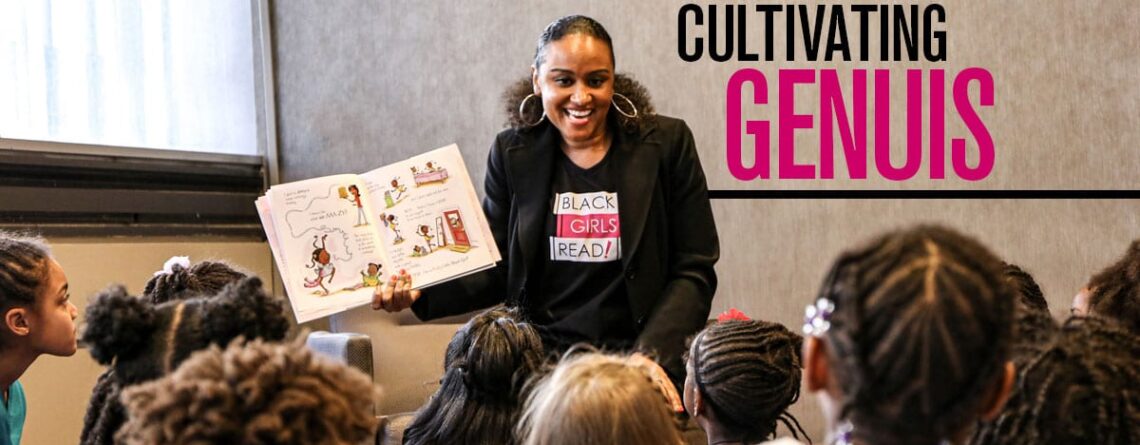

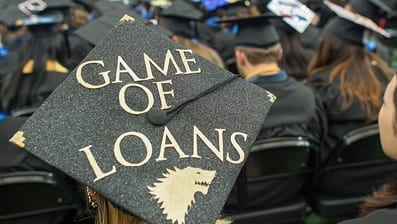
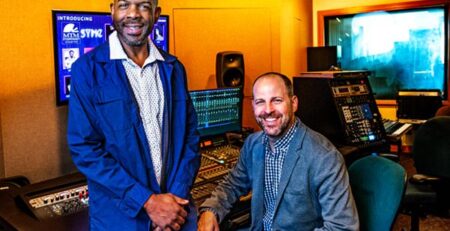

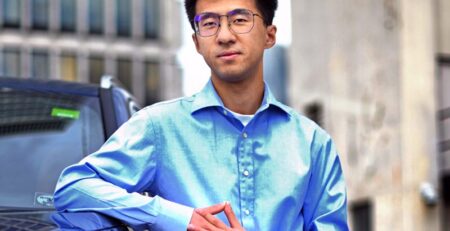
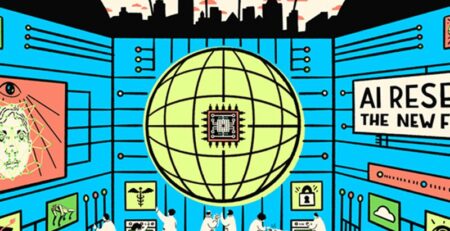
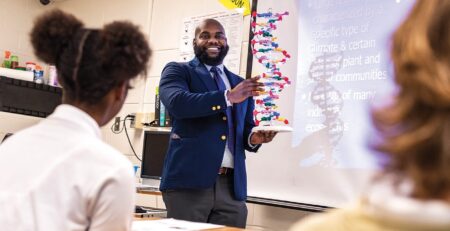

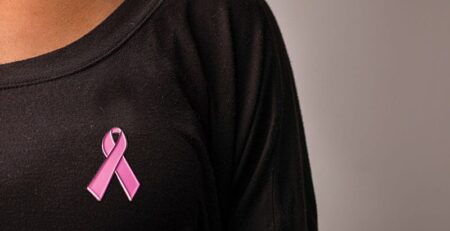

Leave a Reply